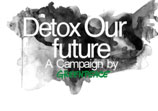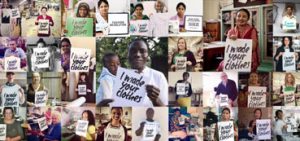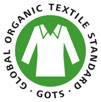By Dr. S. Aishwariya
Textiles is one of the oldest industries known to mankind. Serving mankind from cradle to grave is the role of textiles. This billion-dollar industry is now being questioned for its ethical allegations, after being ranked as the second largest polluting industry. The fancy and cruel side are analyzed ending up with open questions that are to be resolved to make the business have a stand in the future days. When we look into the industry and the eco-concerns alongside the catwalk and stunning business profits, one ends up thinking, “What does it profit a man if he gains the whole world yet loses his soul?” The dark side of the industry has now been brought into the limelight and alarming issues have brought in some awareness and recuse measures. One man’s waste can definitely be another basic utility for basic survival. Recycling and sustainable production has to be seen as a very significant sector to strengthen in the near future. Various organizations are working towards monitoring and intervention when solutions are required. Sustainable Technology Production Practice (STEP) is one such non-profit organization that defines ecofashion as clothes “that take into account the environment, the health of consumers and the working conditions of people in the fashion industry.” It has a major role in shifting the production to a more sustainable way. Organic cotton without chemicals, textiles from bamboo, soy, banana, bagasse, and polyethylene terephthalate bottles recycled into a sports wear garment are few examples. In addition, new sources are also identified for testing its potentiality in textiles. Sasawashi, Japanese leaf on production resembles linen, waste coffee grounds are used for ultraviolet resistance, anti-odoor fabrics, compostable baby diapers, anti-allergic, etc.
ECO-INITIATIVES
 Detox Campaign, 2011 — This campaign was launched by Greenpeace as a means to expose the direct links between clothing brands, their suppliers and pollution globally. The organization has run various investigations into popular brands and released reports on the harmful nature of the materials. They work in picking up samples and testing the presence of carcinogens and hazardous substances on them. The investigation has resulted in some irrefutible facts and data’s that are more than a threat to human survival. The face of the clothes was brought into limelight which will further enable the companies/manufacturers to think green.
Detox Campaign, 2011 — This campaign was launched by Greenpeace as a means to expose the direct links between clothing brands, their suppliers and pollution globally. The organization has run various investigations into popular brands and released reports on the harmful nature of the materials. They work in picking up samples and testing the presence of carcinogens and hazardous substances on them. The investigation has resulted in some irrefutible facts and data’s that are more than a threat to human survival. The face of the clothes was brought into limelight which will further enable the companies/manufacturers to think green.
Fair Wear Foundation — The soul of manufacturing is the hands that make the cloth. This foundation works in collaboration with various brands, factories, trade unions, NGOs, and even governments to verify and improve workplace conditions in the clothing industry. Step by step analysis is made on the quality of life the labors have and impact of the work they do on their lives. In case of an extreme crisis, and need for intervention, the organization takes it call.
Clean Clothes Campaign (CCC) — The motto of CCC is improving the working conditions of textile laborers around the world. It has enabled in improving the working conditions and empowering the workers especially in the garment and sports wear sector. The major objective is to push companies and governments to take the responsibility along with ensuring that workers’ rights being implanted and maintained. More awareness is created every year and motivates to widen the circle as well of people in it.
The True Cost – Documentary film — This documentary, directed by Andrew Morgan, has captured the visions from all over the world, on how the textiles are made, from slum to runway showing the luxury and dark side, the high pricing and low wages for workers. The documentary links the contrasting side of cheap fashion and labor exploitation with huge implication on nature.
Right First Time (RFT) in Dyeing — The concept was framed in 1970. It employs checking the shade of the dyed fabric as soon as the dyeing process is complete. In olden days, the fabric was dyed and then after drying, was checked for a match with the color given in the shade card of specification sheet. When a difference arose, which is a common issue in dyeing industry, the dyeing is repeated which results in added effluent. RFT simply explains achieving target shade in first time dyeing itself. Now every industry has taken up this protocol as a regular step.
Naturally colored cotton — Genetic engineering combined with textiles, evolved with creating colored cotton by shifting gene code, resulting in cotton with naturally occurring shades. Red, green and brown are shades available. The colors stay on the cloth for a longer time, compared to natural dyed textiles. Yields are typically lower and the fiber is shorter and weaker but has a softer feel than the more commonly available “white” cotton. This lowers our dependency on dyeing and hence decreases toxic chemicals and finishing involved in dyeing.
 Exhibition by the Craft Council of India — India is known for its unending list of arts and crafts. The textiles, apparel and accessories have always been customized with a flavor that was regional. Thus, each state in the country has been bestowed with exclusive crafts which are all sustainable. It is no surprise that all the synthetics are just the gift from last century and all our age-old crafts are 100-percent organic, handcrafted and sustainable. It can be muslins, Mul Mul, Kalamkari, Ikats, Pattanchitra, Murals, Madhubani or Warli the craft is a symbol of sustainability. Understanding the strength that lies in our country, the government has taken initiatives to conduct a three-day exhibition where craftsmen and artisans around the country come in person, perform the art, create a network, increase the sales and bring in more awareness to the public. This is one measure taken by each state to annually meet and greet which can be a huge boost to our native artists.
Exhibition by the Craft Council of India — India is known for its unending list of arts and crafts. The textiles, apparel and accessories have always been customized with a flavor that was regional. Thus, each state in the country has been bestowed with exclusive crafts which are all sustainable. It is no surprise that all the synthetics are just the gift from last century and all our age-old crafts are 100-percent organic, handcrafted and sustainable. It can be muslins, Mul Mul, Kalamkari, Ikats, Pattanchitra, Murals, Madhubani or Warli the craft is a symbol of sustainability. Understanding the strength that lies in our country, the government has taken initiatives to conduct a three-day exhibition where craftsmen and artisans around the country come in person, perform the art, create a network, increase the sales and bring in more awareness to the public. This is one measure taken by each state to annually meet and greet which can be a huge boost to our native artists.
Fashion Revolution/who made my clothes — A huge revolution broke in the year 2013, when the garment company in Rana Plaza, Bangladesh, collapsed and the accident killed 1,135 people and injured 2,500. It is one of the biggest tragedies in the apparel industry, and caused a huge sensation thereby increasing awareness about the working conditions, safety norms of workers, salary and quality of life in the garment industry. The fashion and apparel industry from thereon have worked towards labor safety and welfare, as many Governmental policies, NGO’s and Environmental activists got involved into checking on people and their placement in the industry.
In this regard, a vibrating global movement arouse, which unites people and organization to work in cohesion to monitor the way in which our clothes are made from the scratch. Safe, clean, fair trade from sourcing to discarding the entire life cycle is assessed. The mission is built on the fact that change can be made when the complete value chain from farmer to consumer is monitored, in which changed can be bought in.
 Global Organic Textile Standard (GOTS) — Considering the ecological and social concerns, a textile standard for certifying organic fiber was introduced. Fiber being the fundamental unit in textiles, sustainability in the product beings from fiber. Harvesting, labeling, end user, consumer claims are screened for certification. The processing, manufacturing, labeling, trade and distribution are also counted as essential factors.
Global Organic Textile Standard (GOTS) — Considering the ecological and social concerns, a textile standard for certifying organic fiber was introduced. Fiber being the fundamental unit in textiles, sustainability in the product beings from fiber. Harvesting, labeling, end user, consumer claims are screened for certification. The processing, manufacturing, labeling, trade and distribution are also counted as essential factors.
Zero Discharge of Hazardous Chemicals (ZDHC) — This foundation monitors, segments of the industry which includes textile, accessories and leather encompassing its entire value chain which was decided to be monitored with a goal “Zero discharge.” Here the synonym is towards zero toxic substances which is possible by sustainable chemistry and best eco-practices.
ECO-AGE /The Green Carpet Fashion Awards — When a business is working towards creating, implementing and communicating eco-based textile products, the Eco-Age brand and marketing constancy through the Founder Livia Firth identify and acknowledge their work. Further they help in creating a bigger market and a recognizing their work. They give importance to the fact that style has to be sustainable.
Fair trade and UnLtd India — Fair Trade is a certification which is given when they identify that the trade is credible and communicate it to the people in the end of chain, the consumers. Fair salary is one of the prime objectives, 10% of profit is given for society and 60% advance for producers (before sale). UnLtd is a platform that helps the entrepreneurs in social media by funding and supporting them when the Individuals idea, passion and skill helps in curing the country’s social problems.
Conclusion
Pollutants released by the global textile industry are continuously doing unimaginable harm to the environment. Every process involved in the production from raw material to the final product is responsible for several impacts on the eco-system. The only solution to this problem is to follow sustainable lifestyle. Using products that does not harm animals, does not involve children, ensures fair wages among employees and does not deter the natural environment can be termed as sustainable lifestyle. Additionally, there are sustainable brands that work together to create a clean clothing line. The biggest challenge they face is lack of awareness of sustainable textiles. The paper might have given some inputs on the eco-initiatives that are available to support green consumerism in future.
References
- http://www.cicr.org.in/pdf/naturally_colored_cotton.pdf
- https://www.fashionrevolution.org/tag/who-made-my-clothes/
- https://www.roadmaptozero.com/
- https://global-standard.org/
- https://www.fairtrade.org.uk/
- http://www.wwf.eu/campaigns/past_campaigns/detox_campaign__revealing_the_truth_about_chemicals/
- https://www.greenpeace.org/archive-international/en/campaigns/detox/water/detox/intro/
- https://eco-age.com/
- https://eco-age.com/news/green-carpet-fashion-award-winners-2018
- https://www.fairwear.org/
- http://truecostmovie.com/
- https://cleanclothes.org/
Editor’s Note: Dr. S. Aishwariya is a INSPIRE fellow (DST) and Assistant Professor, Department of Textiles and Clothing, Avinashilingam Institute for Home Science and Higher Education for Women, Coimbatore, India.




